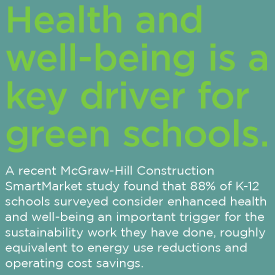How Do You Want to Change the World?
As a special collaboration, we proudly feature thoughts by
Nikole Brugnoli Sheaffer, Director of Innovation & Development
at The Environmental Charter School at Frick Park
I’m a curriculum geek. To the non-educator world, this translates into a passion for the framework, resources, and instructional practices associated with teaching and learning. I dig into authentic ways of engaging kids, I get excited about new ways to inspire creativity, and I am the kind of person that loves to get in the “mess” of learning with kids (not at them).
Couple this affinity with an intensity and drive for building ecological literacy to both adults and children, and I found my dream work in building the educational program at the Environmental Charter School (ECS) in Pittsburgh, Pennsylvania.

Six years ago, at the school’s inception, I believed that if the right curriculum stimulated the type of thinking and experiences that engage learners in building a more integrated view of the world, ECS would be poised to produce environmentally literate citizens that would, in fact, change the world. Based on this belief, we built experiences for students that included energy audits, water testing, waste stream analysis, composting initiatives, and nature-based activities. We aligned explorations in math that supported the actual work of scientists. We read the Omnivore’s Dilemma for Young People and staged debates around local versus industrial farming. We explored natural materials versus synthetics, designed green playgrounds, and even used the petals of the Living Building Challenge to think about the redesign of a classroom space.
Yet, after all of these tactical activities, and through a myriad of opportunities to engage kids in the WHAT of a green school, we found we weren’t making much traction. The experience alone wasn’t creating a culture or mindset shift in how students or faculty member saw or interacted with the world. The reality of the green experiences we were providing didn’t translate outside of the classroom. We check-marked all the correct environmental education boxes to get us there, but the outcome wasn’t what we intended. Kids weren’t going out and changing the world, and, in fact, they didn’t even feel empowered to do so. We were surprised to find that student behaviors outside of the classroom did not align with our goals to develop a thoughtful, engaged citizenry.
Changing Our Approach
ECS isn’t in the business of checking boxes; we are in the business of changing the world, for the better. And if our methods and materials were leaving holes in getting students to change behaviors or influence others to make more thoughtful, systems-based decisions, what was the point? Why not just go back to traditional methods and pedagogy? Why bother checking the “green school boxes” at all if it didn’t translate to a bigger picture?
And then, we were handed a gift. We began working with a two-year cohort with a project called the Green Schools Academy (GSA). A program stemming from the Green Building Alliance in Pittsburgh and consulting work with Christine Mondor of evolveEA, the Green Schools Academy tested our long-held educational beliefs, pushed us into uncharted territory around the importance of purpose, and forced us to really delve into what it means to develop a “Culture of Sustainability” in a school.
Throughout the first year of our journey with the Green Schools Academy, we discovered the values, attributes, and mindset shifts that need to be ingrained in a school’s culture and way of being before any meaningful change can occur. We stripped away the box-checking mentality and struggled to figure out where we missed the mark. Yes, low-hanging fruit like green purchasing policies and green cleaning makeovers can be instituted, just like kids completed a school energy audit through our curriculum practices. But, unless the groundwork and foundation of the school inherently believes and lives in the reasoning behind this work, these policies and initiatives were doomed to be another failed recycling program (and pretty much every school has a failed recycling story in their green history).
Redefining the Movement

Much like our own organizational growing pains, the Green Schools Movement will be hitting it’s own midlife crisis soon. I’m hoping that the movement takes a closer look at the values and beliefs that currently exist, and determines how to recreate a foundation in which new mindsets can be built. Much like the education reform movement, it isn’t about the tactics – it is about shifting the mindset. And no curriculum choice, no building renovation, no retrofit or audit will make this happen. Boxes can be checked, but change will be fleeting.
Rather, the Green Schools Movement needs to encourage transparency, and openness. It needs to get courageous and rip down the preconceived notions. We must bring folks to the table who are willing to say the education system is broken and we are ready to dismantle it to its core, and then collaboratively discover new ways to design school systems that reflect and support the kind of thinkers we want to foster for an active engaged citizenry.
Tackling the WHAT in the Green Schools Movement will continue to be an easier entry point for schools that believe there is nothing wrong with the status quo. Many of the boxes will be checked off, and schools that can, (often those with a champion or a pot of cash dedicated to it) will.
Delving into the WHY, however, is where the traction meets reaction. The WHY defines a movement, and creates a culture shift. The WHY will get at the good stuff, and allow the movement to a greener, sustainable culture to bleed into schools rather than forcibly regulate it inward. And then, with students marching to a new way of seeing and being, our young, active, engaged citizenry will see how sustainability, health, environment, culture, and community collide.
This is when the movement of Green Schools will change the world.

